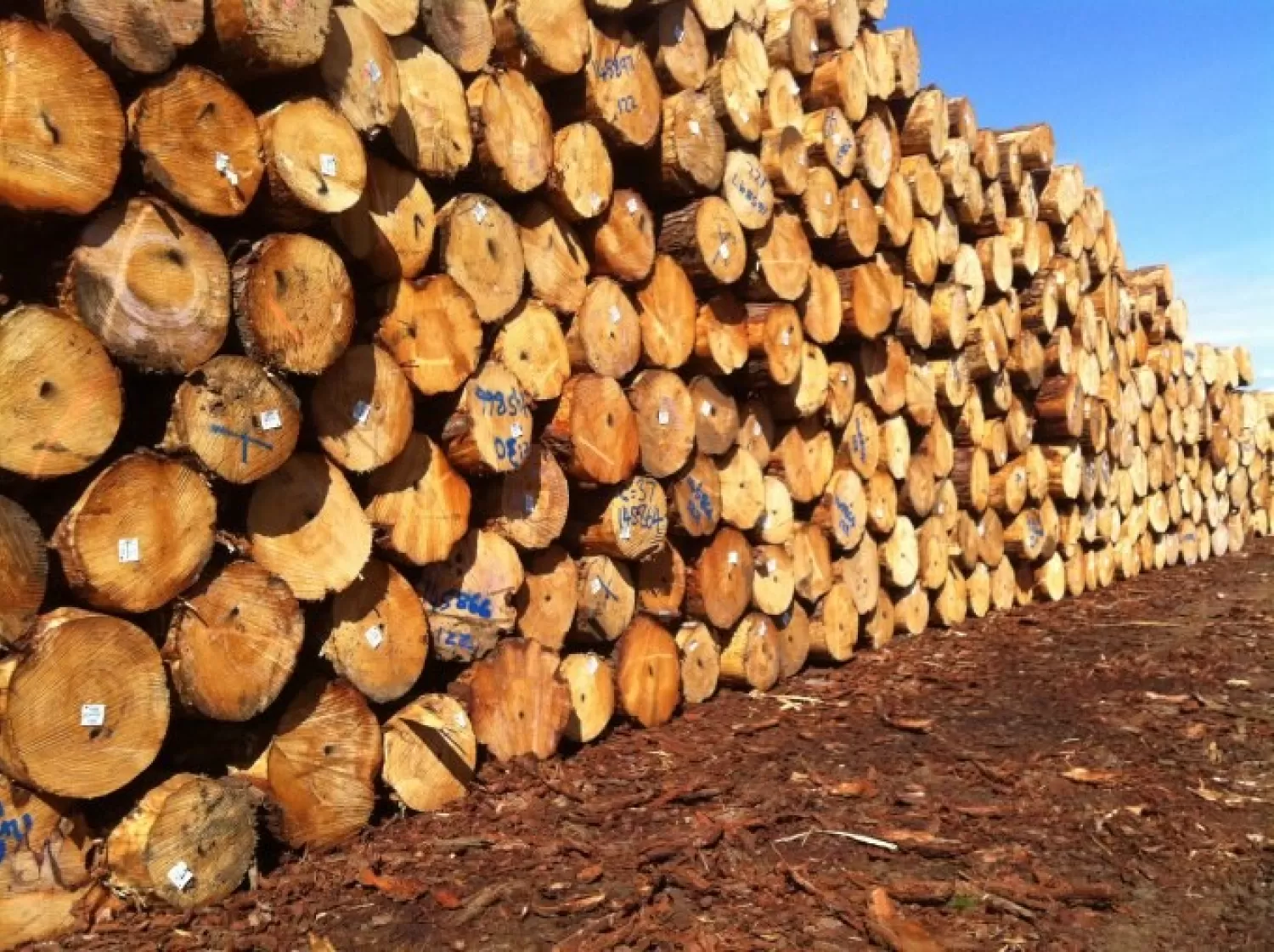Economic benefits and markets
Diversify your income and increase your farm’s natural capital
Diversify your farm's income and increase profitability with trees. Understand the available markets and end-uses for your trees before you plant, as this will guide how you design and management your plantation.

There are many potential markets for farm-grown trees, including wood, carbon and biofuel. Trees can also increase your farm's efficiency and value. There are many opportunities to generate income throughout a tree's life. So you don't need to wait until harvest time for your plantation to pay off financially.
Understand your market options and manage your plantation to maximise income from trees.
Wood
Wood is a key market for Tasmanian tree growers. Demand for timber is high in Australia, which is predicted to grow in the future. This means there are plenty of opportunities for farmers to enter the commercial wood market.
Commercial trees have different qualities, end-uses and values. You can harvest and sell trees from farm plantations or from native regrowth forest management. There are two main types of log produced from commercial trees:

Sawlogs
Used for veneer, plywood, sawn timber, poles and piles.
Sawlogs are graded on appearance, strength and size, so need careful management to maximise price at market.

Pulplogs
Used for pulp, chips, boards and panels.
Pulplogs are a lower-value product usually generated from commercial thinning, pruning or harvested trees that don’t meet sawlog quality.
Logs can be processed to create a range of products. A tree's species, log size, strength and quality determine what it can be used for. End-uses include:
- Residential and commercial construction
- Furniture
- Paper and packaging
- Utility poles, piles and bridges
- Landscape and fencing
- Cabinetry
- Food additives
- Rayon and cellulose products.
Learn more about the market opportunities and end-uses for farm-grown wood:
Fact sheet 15: Economic benefits Farm Guide – Utilisation of farm-grown wood Your Private Forest – How to use it Forest CertificationDid you know?
Private forests contribute more than 70% of Tasmania’s forest production wood volume.
How much?
Stumpage – also known as ‘royalty’ – is the price a buyer will pay for your wood. Rates vary depending on factors such as:
- Species
- Quality and grade
- Volume
- Size of trees
- Location of, and access to, trees (on-farm)
- Distance from market (transportation).
Stumpage can vary significantly. How trees are managed has a major impact on the value of wood. Some plantations are designed as low value / high volume operations, while others are high value / low volume (e.g., specialty timber from minor species, which typically commands a higher price).

Selling wood from private native regrowth forests
Tasmania’s private native regrowth forests have a long history of active management for timber production. Commercial silvicultural treatments produce harvested logs that can be sold. Planning should be started several years prior to anticipated operations.
Native regrowth forest managementCarbon markets
As trees grow, they absorb carbon from the atmosphere and store it as wood. You can access markets from this process in two ways:
Carbon credits
Reducing emissions is not possible for some high-emissions industries such as aviation and energy. Companies in these industries buy carbon credits to offset their emissions.
By growing trees, you can generate carbon credits and sell them for income. Most growers trade carbon credits via an aggregator or carbon project. They will plan and manage the process on your behalf in exchange for a portion of the credits you generate.
Carbon "insetting"
Markets around the world are setting targets for sustainability. Net zero emissions is becoming a common industry standard for supply chains.
Balancing your farm's emissions is a way to retain market access and stay competitive in the future. Trees can help reduce your farm's carbon footprint. Once your farm is carbon neutral, you can certify your products as net zero or low emissions for a premium price.
Find more information about trees and access tools to calculate you farm's emissions:
Net zero
Net zero is becoming an industry standard for supply chains. Domestic and global markets are setting targets for low or no emissions products.
Bioenergy
Bioenergy is a sustainable alternative to fossil fuels. It's predicted to grow faster than any other form of renewable energy.
Trees produce organic matter known as biomass. In forestry, biomass usually comes from wood and harvest residues that would otherwise be waste. Biomass can converted into bioenergy, which is used to produce electricity, heat and transport fuels.
Bioenergy is an emerging market in Tasmania. However, state and national governments have announced investments in this alternative energy source. As the market grows, bioenergy may offer new opportunities to increase your income while reducing farm waste.
Learn more about bioenergy and the emerging market in Tasmania:
8: Bioenergy and forestryRenewables target
Tasmania aims to be 200% self-sufficient in renewable energy by 2040. Bioenergy is a large part of this target.
Natural capital
Trees improve the health and sustainability of farmland. It also increases a farm's productivity and its market value. Natural capital accounting is a way of understanding these benefits in financial terms.
Putting a dollar value on natural capital is complex. Full financial modelling is currently being developed. However, existing models show the financial returns from natural capital benefits of trees can exceed the value of timber production.
Non-wood products
Many farmers produce non-wood products from their forests, particularly native forests. This includes:
- Seed
- Bushfoods
- Native plants
- Oils
To explore these markets, develop a plan that accounts for the available resources, current and future demand and a financial analysis.
Growing the future: Economic benefits and markets
Interview: Economic benefits and markets
Kenilworth Demonstration site
Anh Nguyen - Ese vineyard owner
Michael Lee - Centre for sustainable architecture with wood
Fulham Dunalley - Demonstration site
Interested in creating income through trees?
Contact Private Forests Tasmania or speak to a forester for advice.
Contact Tree Alliance Directory of Tasmanian Forestry Services
